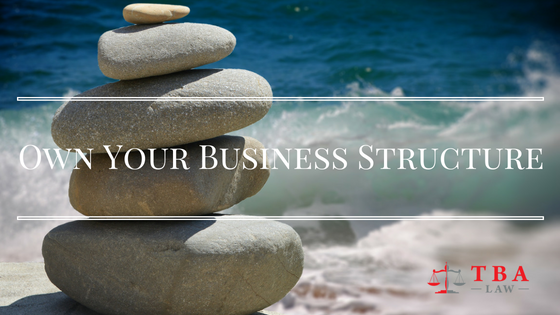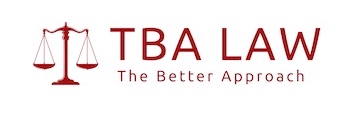Own Your Business Structure
A quick and easy way to assess how you want to run your business
The right structure for you could depend on a lot of different factors: your goals, your current business size, the size of business that you want to have, how many owners there are, and what stage of business you are at. You don’t always have to stay in the same business structure.
As a small business, there are tax concessions that can be used to change your business structure later. So you could start with a simple structure to begin with, and move the business into a more complex structure for growth and bringing in new owners later.

These are the main structures that you can run a business in Australia:
Sole Trader
A sole trader is when you own and run the business by yourself. You have an ABN personally, and there is no legal distinction between you personally and your business. You receive all the profits, and are personally liable for all losses, debts and taxes incurred by the business.
You can have a business name in the form of a trading name registered with ASIC.
Advantages:
This is cheap to set up and run. You have total control, you don’t have to answer to anyone, or share with anyone, and you have access to capital gains tax concessions.
Disadvantages:
Once your business grows and earns a reasonable profit, your income tax is at marginal rates, so you get taxed at a maximum of 46.5%. You have no asset protection, except by insurance, so your creditors can sell anything you own to recover money owed to them, whether it’s a business asset or not. The business also dies with you, and your family will only be able to recoup the equipment and stock value.
Partnership
A partnership is usually formed by an agreement between two people to run a business together – so you and your friend decide to go into business. You register for an ABN as partners. You both share the profits and losses of the partnership. There is no legal distinction between the business and the individual partners, so together and individually you would be liable for the debts and taxes of the partnership. The partnership does not pay income tax directly. The profits are divided between partners and the income tax is paid in your personal income tax return.
Again, you can register a business name for your partnership.
You should have a formal partnership agreement between you both, and the partnership agreement should include a buy/sell component to determine what happens if one of you wants to leave, or if one of you has to leave due to injury or illness.
Advantages:
A partnership can be nearly as cheap as a sole trader arrangement to set up, but the running costs are slightly higher because an extra tax return needs to be done every year. The beauty of a partnership is that it can be as flexible as the partners, and a good partnership agreement can solve most problems and be altered when things change as the business grows.
Disadvantages
Similar to a sole trader arrangement, in a partnership you are taxed on the income in your own tax return, so you are taxed at marginal rates at a maximum of 46.5%. Again, there is no asset protection except insurance, and creditors can target either or both partners’ personal assets to recover debts. The partnership also ceases on the death of one of the partners, so a partnership agreement that provides for the spouse or family of a dead partner is crucial.
Limited partnership
This is an interesting form of partnership that could be used for investment, for example. One partner has full control and the other partners is limited and passive. The limited partner’s liability for the business debts is also limited up to the amount of their investment.
These can be registered with your relevant State government authority, such as Consumer Affairs.
Joint Ventures
A joint venture is like a partnership between companies. Separate companies come together under an agreement to work towards a single goal or project. The partnership can be unincorporated, or a new company can be formed to incorporate the partnership, and each of the parties to the joint venture own shares in the new joint venture company.
Company
You could form a company for your business. Companies in Australia can be public (shares are traded on the stock market) or proprietary (private). A proprietary company is the type you would consider for a small business, and it would include “Pty” in its name for “proprietary”.
A proprietary company can have one shareholder and a single director, or it can have multiple shareholders and directors. It will have a constitution that controls the governance of the company, and you should have a shareholder agreement between any shareholders.
Most proprietary companies are also limited, so they have “Ltd” in their name. This means that the shareholders’ liability to creditors of the company is limited to the shareholder’s original investment (which is often a $2 share!).
A registered company is given an ACN (Australia company number) and will also needs its own ABN. A company is a separate entity or legal personality from its owners and managers.
Advantages
A company is taxed at a flat rate of 30% on profits. Profits can stay in the company, or they can be paid out to shareholders, and the shareholders get the benefit of receiving money with tax partially paid (franked credit). Shareholders and directors have their personal assets protected because the company is a separate entity and liability is limited – to make sure directors liability doesn’t increase, be careful not to give personal guarantees or trade while insolvent! The company also doesn’t die when the directors or shareholders die, but these can be transferred in a Will to the next generation, or to someone buying the business from you.
Disadvantages
The set up and running costs are more than the previous structures. A company doesn’t get some of the capital gains tax concessions that sole traders and partnerships get, but they still get some, particularly if a small business.
Trusts
A trust is a complex legal relationship which arises when a person (trustee) holds property for the benefits of someone else, or a group of people (beneficiaries). A business can be carried on by a trust where a trustee (which is often a company rather than an individual) owns asset and carries on the trading activities of the business on behalf of the beneficiaries of the trust. This is often in the form of a family trust; so the family trustee would run the business for the benefit of the parents and children of the family.
There are various types of trusts, and the way the trust works is all determined by the trust deed. Here are the most common forms of trust:
Unit Trust
A unit trust is a good way of business partners coming together to own a flexible business structure. The share or each partner in the unit trust is determined by the units that each person owns (like shares in a company).
The unit trust is not as regulated as a company, and the whole governance is dictated by the unit trust deed that the individuals set up and agree too themselves, and can alter at any time. Business losses are also trapped in the trust, which is usually a good thing. The trust can offer good asset protection, depending on the wording in the trust deed. A trust is usually limited to 80 years, which should be sufficient for most businesses, and the succession of the business is all determined through the trust deed.
The main downside is the set up and running costs, particularly if you want a company as the trustee, so you might be looking at a couple of thousand dollars a year to do all the tax returns, financial statements and other compliance issues.
Discretionary (family) Trust
Unlike a unit trust, where the unitholders’ interest in the trust is determined by their units, the interests of the beneficiaries in this trust are all at the complete discretion of the trustee. (So the family will want to also control the trustee!)
This is the most flexible way to split income between multiple family members. It has good asset protection, if the trust deed is drawn up right. If your business is a family business, and you can afford the extra running costs, a structure that includes a family discretionary trust is one of the best structures you can choose.
[maxbutton id=”2″ ]





Leave A Comment